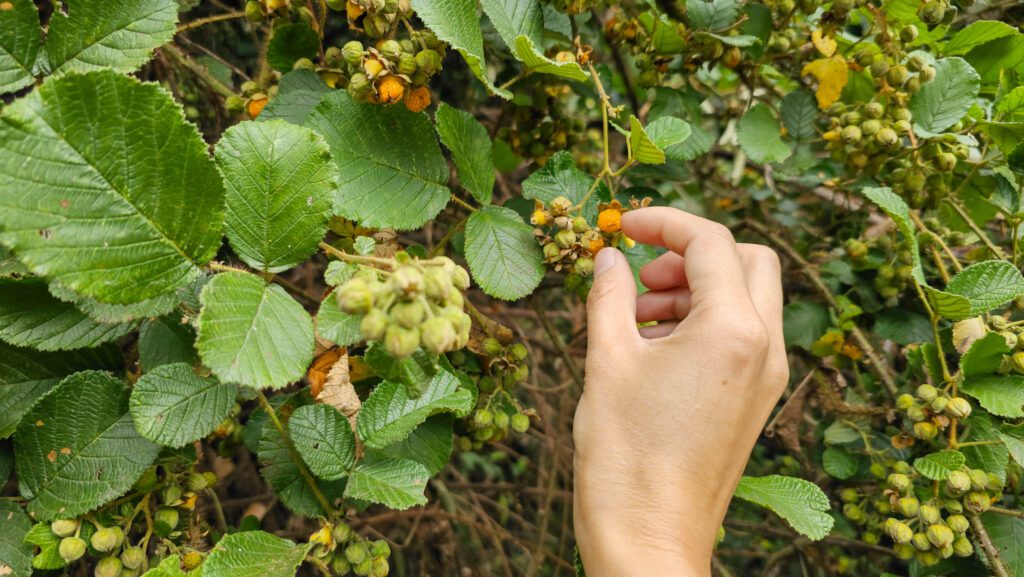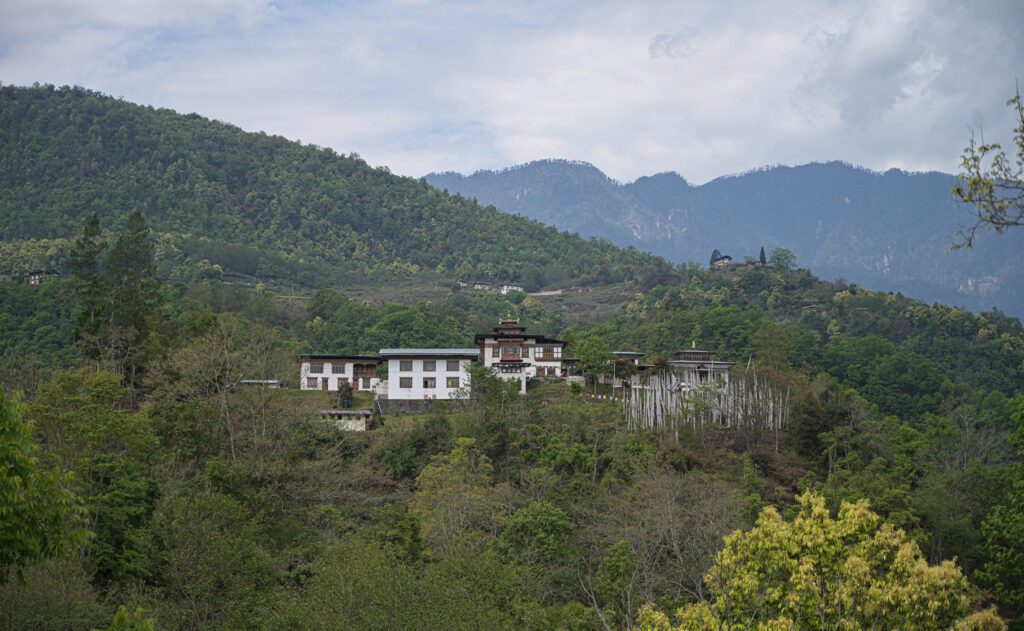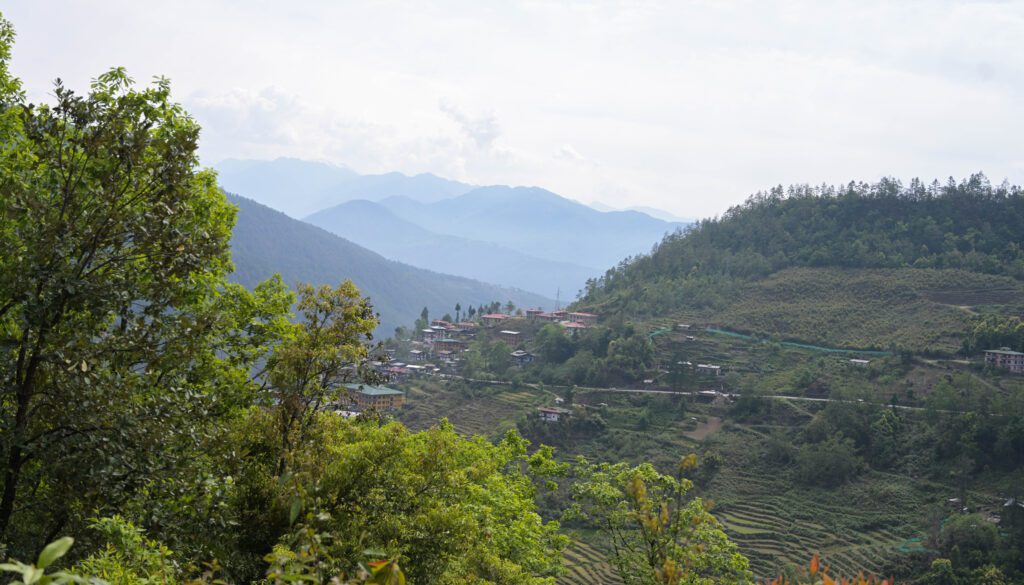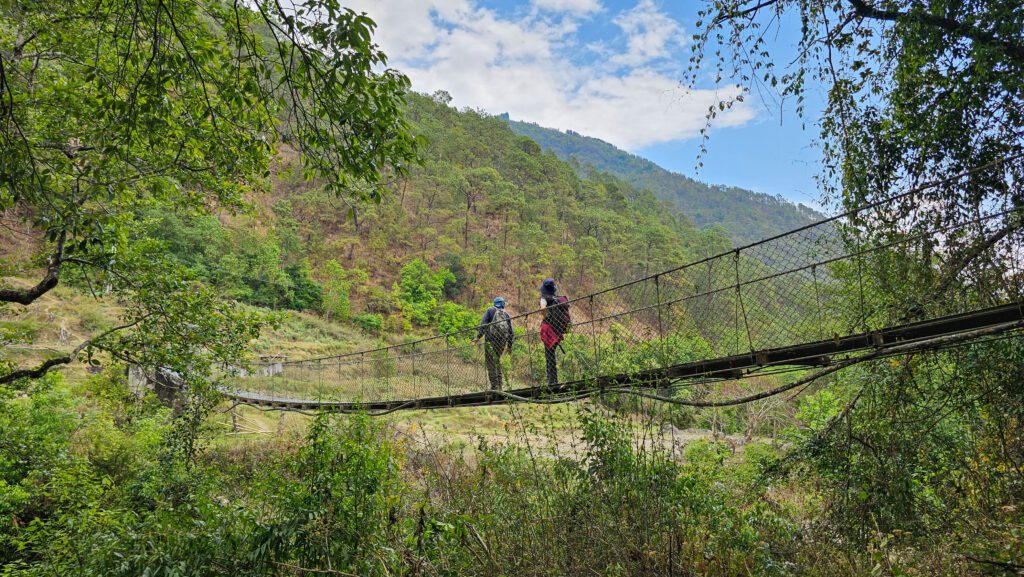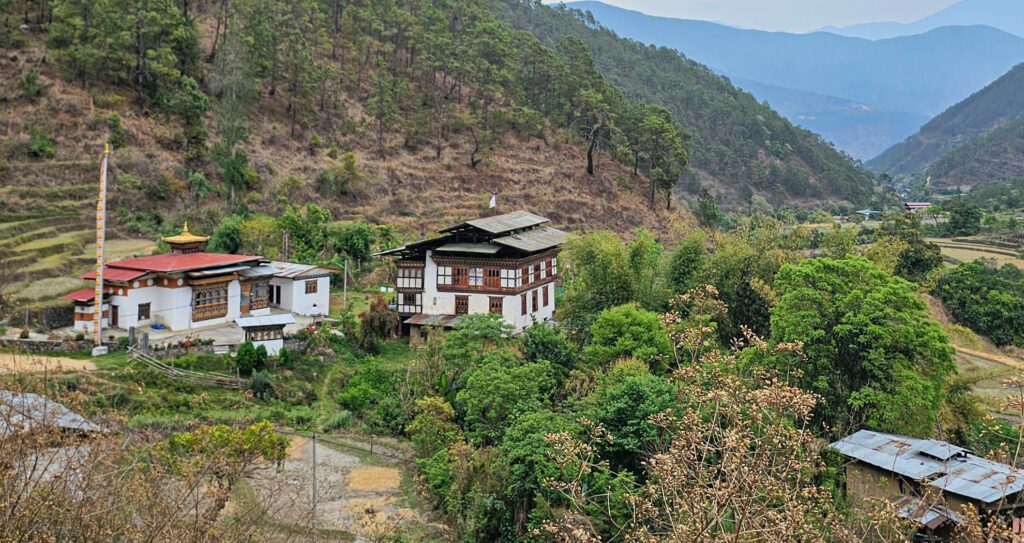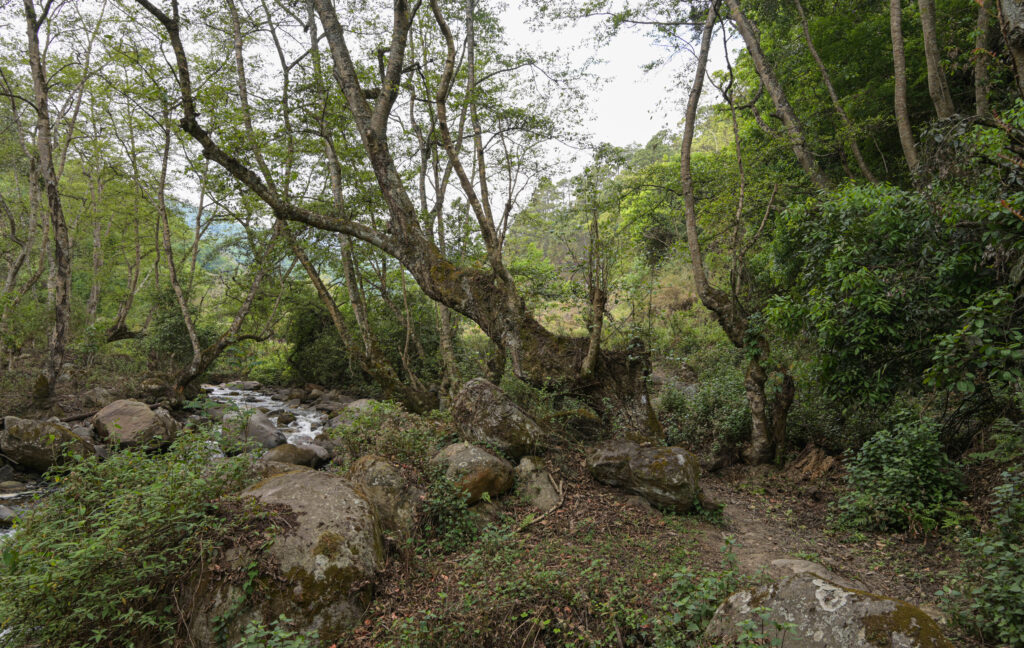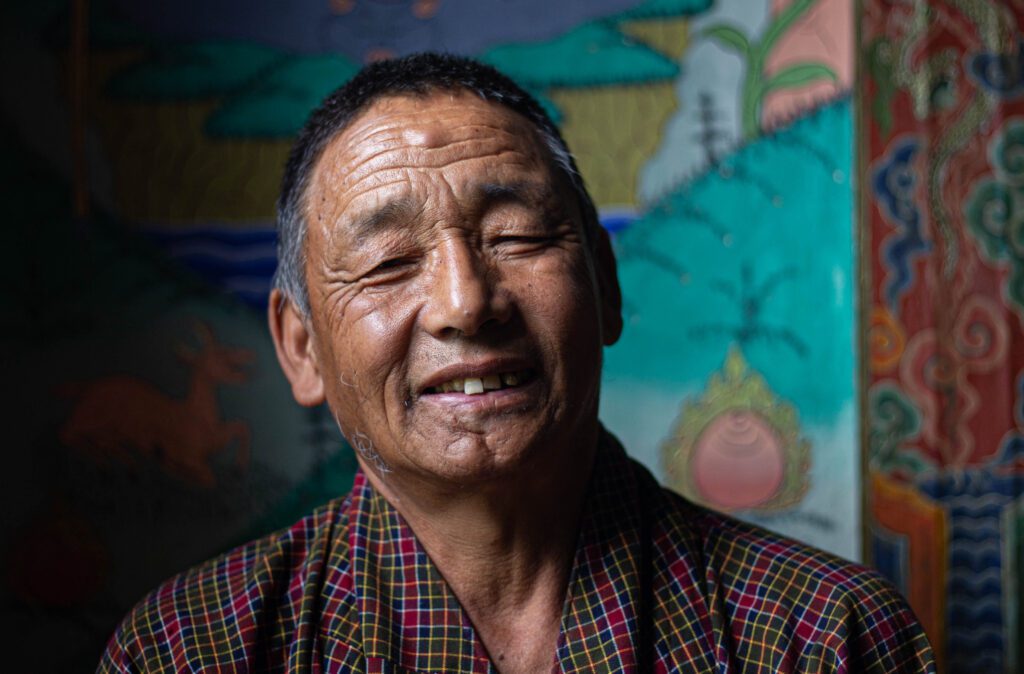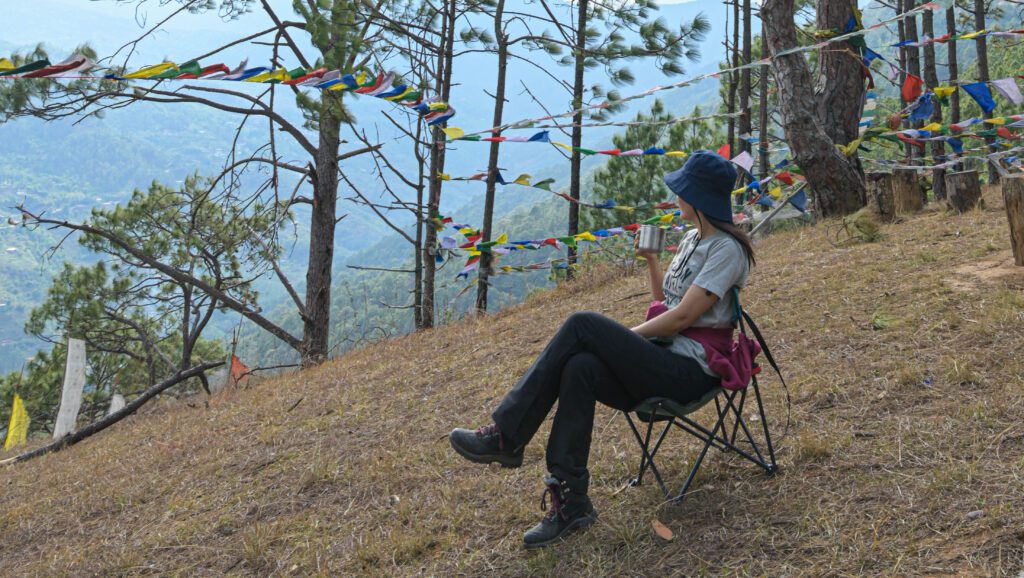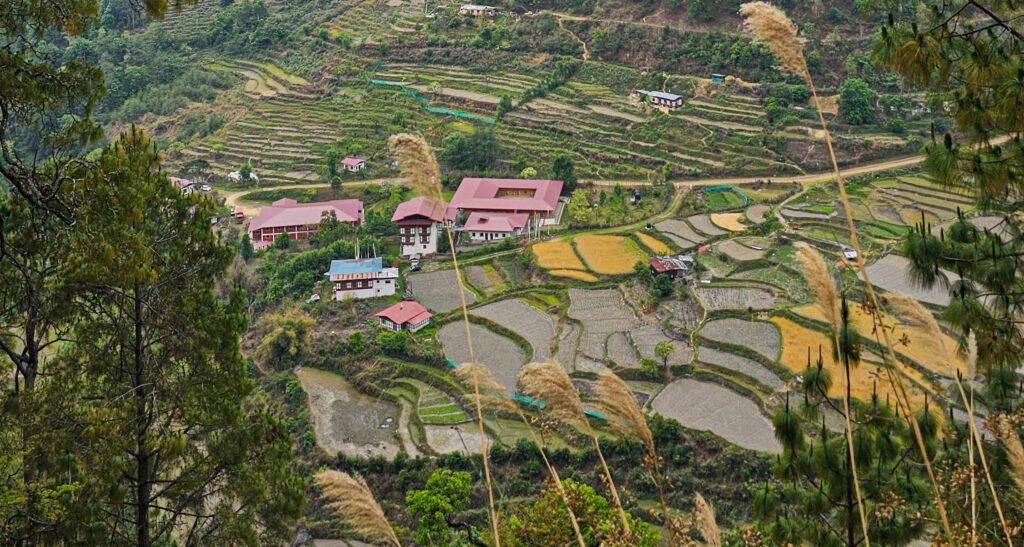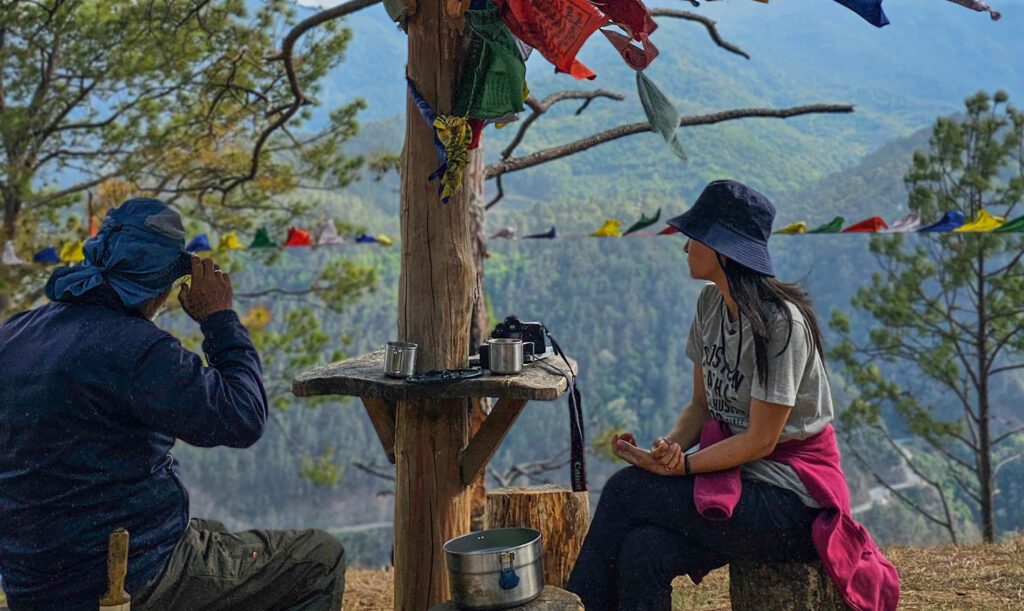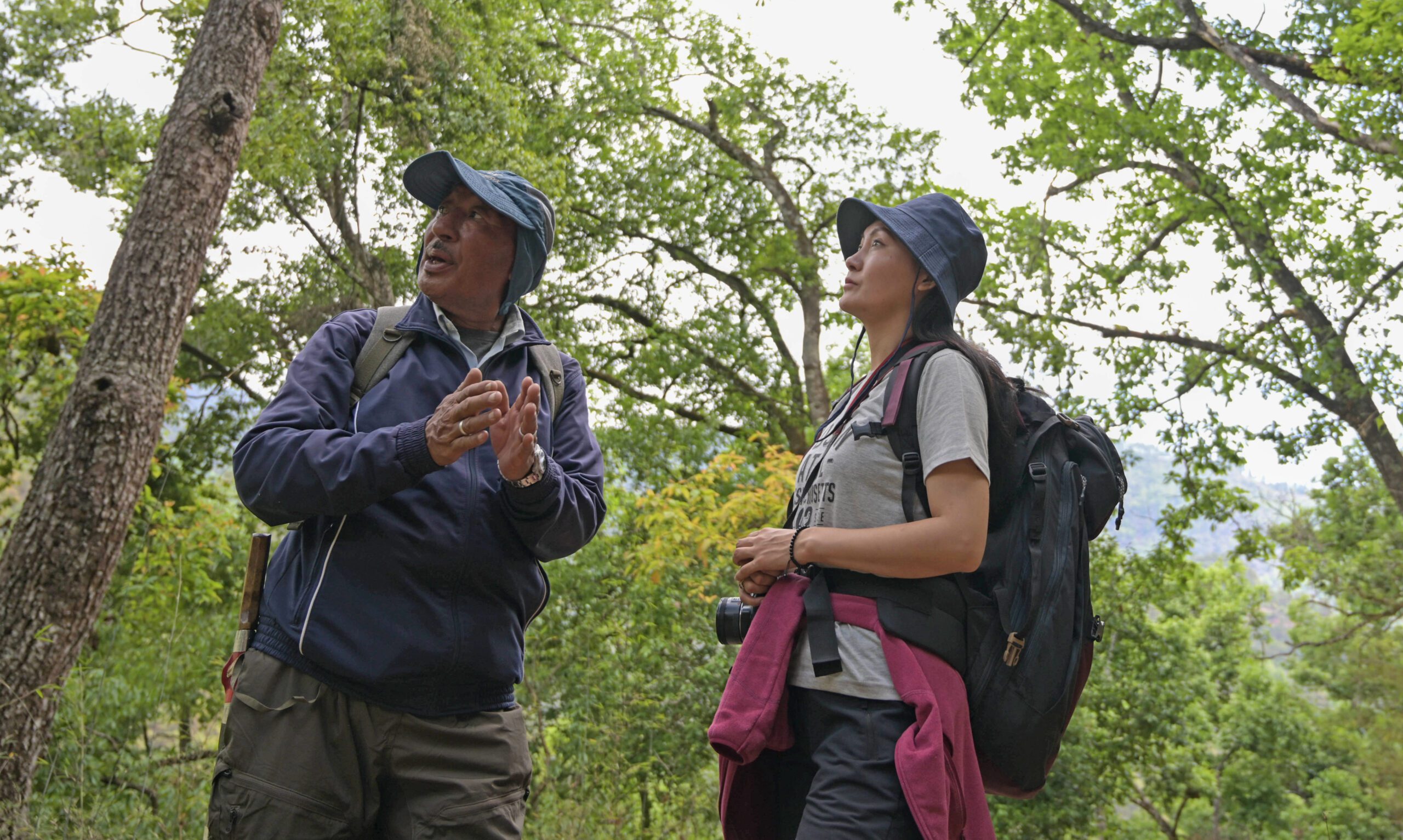
I’m taking on the Trans Bhutan Trail – well one section at a time. It might take me months or maybe years depending on how much time I can commit to it. But I want to complete it in this lifetime…that’s for sure.
The epic #transbhutantrail is a 403-kilometre-long route that starts from the district of Haa in the west of Bhutan to Trashigang in the east. Unlike the more popular northern highland trails, TBT takes you along the paths in the country’s midlands giving new life to ancient trails in Haa, Paro, Thimphu, Punakha, Wangduephodrang, Trongsa, Bumthang, Mongar and Trashigang districts. Although most stretches of the TBT are portions of popular trekking routes, there are parts of the trails that haven’t been walked on for more than 60 years.
What’s so fascinating about the Trans Bhutan Trail?
For a local traveler like myself, it’s the reconnection – to a part of my country’s history that seemed to have been vanishing along with these ancient trails.
With national highways and farm roads connecting far flung places in Bhutan, we know very little today of the stories, experiences of our ancestors and legends that were fading with the ancient trails. Which is why I decided to do one section of the TBT a bit differently – listening to stories of the trail from someone who actually walked on it long before Bhutan had roads.

Meet our Guide retired Gup Dorji Norbu
He has lived in Tobesa his entire life and recounts how he used to take the trail when he was a little boy. “I’m returning after 40 years. Thank you for taking me along.” I was actually thankful to him for agreeing to come along with me. I wanted to hear his stories and understand what it means to him that more visitors can experience these routes now.
There are a total of 19 sections of the trans bhutan trail so I’m starting off with the section in Punakha district taking me from Lumitsawa under Toebesa to Punakha Dzong.
Starting Point – Lumitsawa to Thinleygang Lhakhang
We begin the Chandana stretch of the Trans Bhutan Trail from Lumitsa, a small village near the highway from Dochula taking you to Wangduephodrang district. You’ll find a TBT signpost right next to a tiny shop. You can buy snacks and drinks for your journey here too if you decide to do a spontaneous hike. But be sure not to litter the trash along the way. The first section of the trail descends to the base of the hills of Toebesa under oak trees and soon we climb towards Thinleygang Lhakhang. This temple is known to be where the Central Monastic Body procession stopped to spend the night during their journey between their summer and winter residences in the old days.
Section Details: Lumitsawa to Thinleygang Temple
Time: 45 minutes
Grade: Easy
Details: Descends from a forest of oak and wild chestnut trees and a mild ascent to Thinleygang temple.
Tip: Punakha can get very hot in the summer so make sure you’re hydrated and wear a cap. The stream sections have a lot of sandflies so carry a bug spray. If you’re going to visit the temple, carry cash for the temple offering. You’ll also meet a lot of little monks in the temple. It’ll be nice if you can gift the little monks some candy.
Thinleygang to Chandana:
Did you know that this section of the Trans Bhutan Trail in Punakha is also known as the #divinemadman Trail? Initially revived by @ydf_bhutan under their #mygakyidvillage project,it was named after Lam #Drukpakunley. It ultimately takes you to a house in Chandana valley where he met his consort Khandro Pelzang Bhuti. The twist in the story? She was a married woman.
The Buddhist Lam Drukpa Kuenley from Tibet is known for a lot of things, especially his unorthodox way of teaching. Famous for his ‘Phallus’ – yes you read that right, Lam Drukpa Kuenley used his phallus to enlighten beings and subdue demons.
But I always felt his eccentric side often overshadowed what his approach really stood for. At an era where rigid monastic teachings were a norm, Drukpa Kuenlay is said to have exposed the true nature of Buddhism by demonstrating that enlightenment could be attained by anyone ; regardless of their social status, education, or religious affiliation. He rejected the notion that spiritual progress was limited to the monastic elite. He emphasized the importance of cultivating wisdom and compassion in all aspects of daily life.
What I personally find fascinating is that Drukpa Kuenlay also challenged the rigid social and cultural norms of his time, particularly with regard to sexuality and gender roles. I could go on about the eccentric Lam & his ‘thunderbolt’ phallus, but let’s leave it for another adventure?
The legend of Lam Drukpa Kuenley and Toebchandana tells the story of how after Lam Drukpa Kuenley dreamt of his destiny in the south of Tibet travelled to Chandana. He was following an arrow that he had shot that landed on the stairs of this house. After being invited in by the merchant Toeb, Drukpa Kuenley is said to have fallen in love with the merchants wife Pelzang Bhuti. Their union would go on to birth some of the most notable teachers of Dharma.
We were not allowed to film inside the main altar. But I finally saw what I came for. Inside the altar is the shrine of the ladder on which Drukpa Kuenley’s arrow hit. Covered in scarves and placed in the altar, it is a rare sight.
Ap Khandu the caretaker is a direct descendant of Pelzang Bhuti. Khandu tells me that he cannot bring himself to leave this place. He says that whenever he does leave, the ladder and the statue of Drukpa Kunley in the main shrine room haunt his memory and he has to return.
Section details: Thinleygang Temple to Chandana
Time – 1 hour
Grade – Very Easy
Details: The trail descends from the temple towards a beautiful river cutting small terraced fields at the base. Take the path to the right under the bridge as you cross the suspension bridge and the clear path will take you to the Toeb Chandana House.
Tips: Lot of sandflies near the river. The Chandana House may be a landmark but it is also a family’s home. They are very hospitable and show you around but make sure you return the favour by gifting some money to the altar at their family temple. This is the least you can do.
Chandana to Siew Drangsa:
After crossing the bottom of the hill we made our way upwards from Chandana towards the Siew Drangsa – the hill top where the entourage of the Central Monastic Body stopped for lunch in the old days when they moved to Punakha Fortress for their winter residence.
The dense forests along Chandana make way for tall pine trees and drier shrubs as we climb upwards. If you’re walking on a sunny day in summer, this walk will definitely make you break into sweat. Soon a gentle mountain breeze soothes the exhausting afternoon walk.
If you decided to do this trail spontaneously and didn’t pack lunch (like me), the hill top also has a cute roadside cafe. I was dragging my feet with hunger by the time I got there. “Aren’t you the YEE lady that makes travel videos?”, the lady behind the counter asked looking at me intensely.
Karma Choden opened her little roadside cafe several years ago to showcase her baking skills. But with family work she said she didn’t have time to bake. I told her that with the number of visitors along the trail, her little baking business would do wonders for trail walkers wishing to have something more than just tea and snacks. But one thing’s for sure I think I had the best bowl of noodles there. The view, the warm Punakha mountain breeze and the 2 hour walking session did play a part, though, I think. I looked around for Azha Gup.He still had that same level of bounce in his steps as we finished up our meal quickly and made our final descent towards Punakha Dzong.
Section details: Chandana to Siew Drangsa
Time – 2 hours
Grade – Moderate
Details – The slight uphill walk takes you under tall pine trees with no shade. The drier landscape in this stretch can be exhausting and really hot.
Tips – Reapply your sunscreen because you’ll be feeling the heat on your face radiating from the ground here. Carry an umbrella or wear a good sun hat. But don’t forget to stop and enjoy the views from the hill. You’ll see beautiful fields at the bottom of the hill that you usually don’t notice as you’re driving towards Lobesa. Enjoy the breeze.
Siew Drangsa to Punakha Dzong
The remaining trail takes us on a farm road through Genchena village. Enjoy beautiful vistas of Punakha’s river and wide rice fields. And soon we found ourselves walking on the paved road taking you towards Punakha dzong.
Section Details – Siew Drangsa to Punakha Fortress
Time: 1 hour 30 mins
Grade: Easy
Details: The trail after the viewpoint from Siew Drangsa takes you along a farm road with views of scattered village houses in Genchena. You’ll enjoy vast views of Punakha and Wangdue’s mountains here.
Tips: Look out for fast-driving boleros on the farmroads.
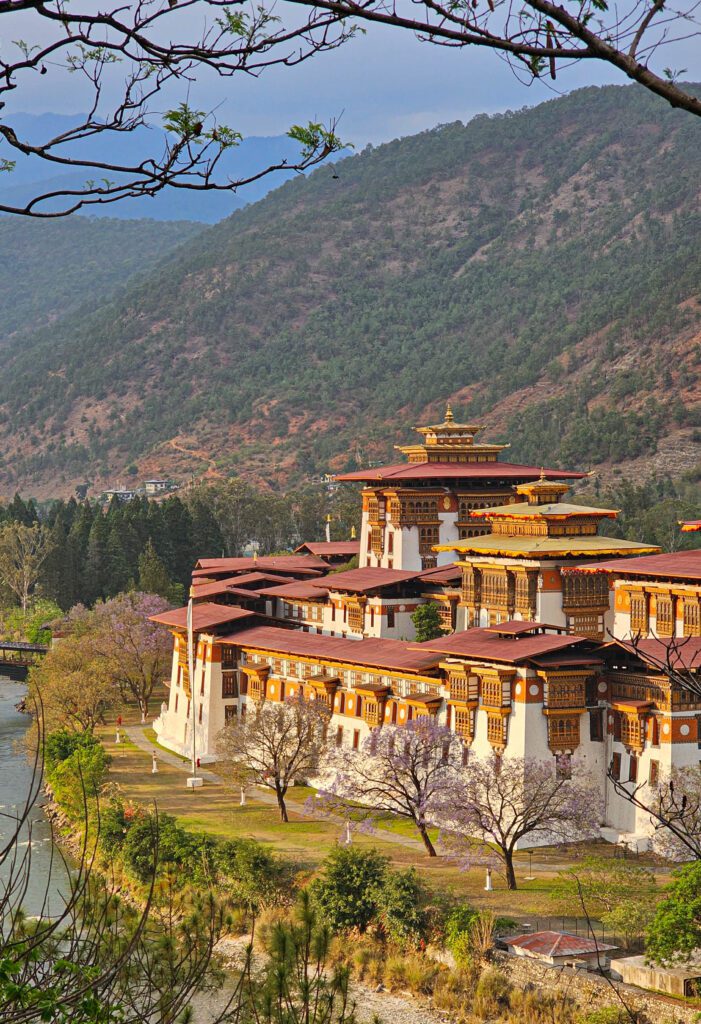

Conclusion
As a local I had often wondered what the hype of the Trans Bhutan Trail was all about. And I would have to finish the entire trail to tell you all about it. But I’ll share one thing after my first section completion. Trans Bhutan Trail brings you closer to diverse communities and settlements across Bhutan.
You’ll pass by the footsteps of our ancestors, who carried stones along the very paths to build the fortresses we have today. You’ll come across stories of Royal messengers hurrying from court to court. Monks walking to the rhythm of their prayers and tales of divine madman & his thunderbolt teachings.
I’m grateful to Azha Gup Dorji Norbu for enriching my first experience walking the Trans Bhutan Trail. It taught me there’s so much to these experiences than just taking in breathtaking views for a pretty photo. It’s definitely enriched my experience. I hope this story enriches yours too as you plan to take on this epic adventure.
One down…18 more to go!
Contact Norbu Bhutan Travel for your TBT adventure.
